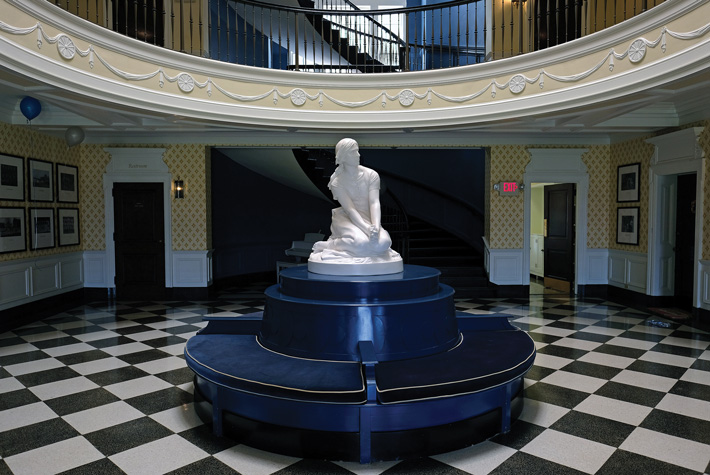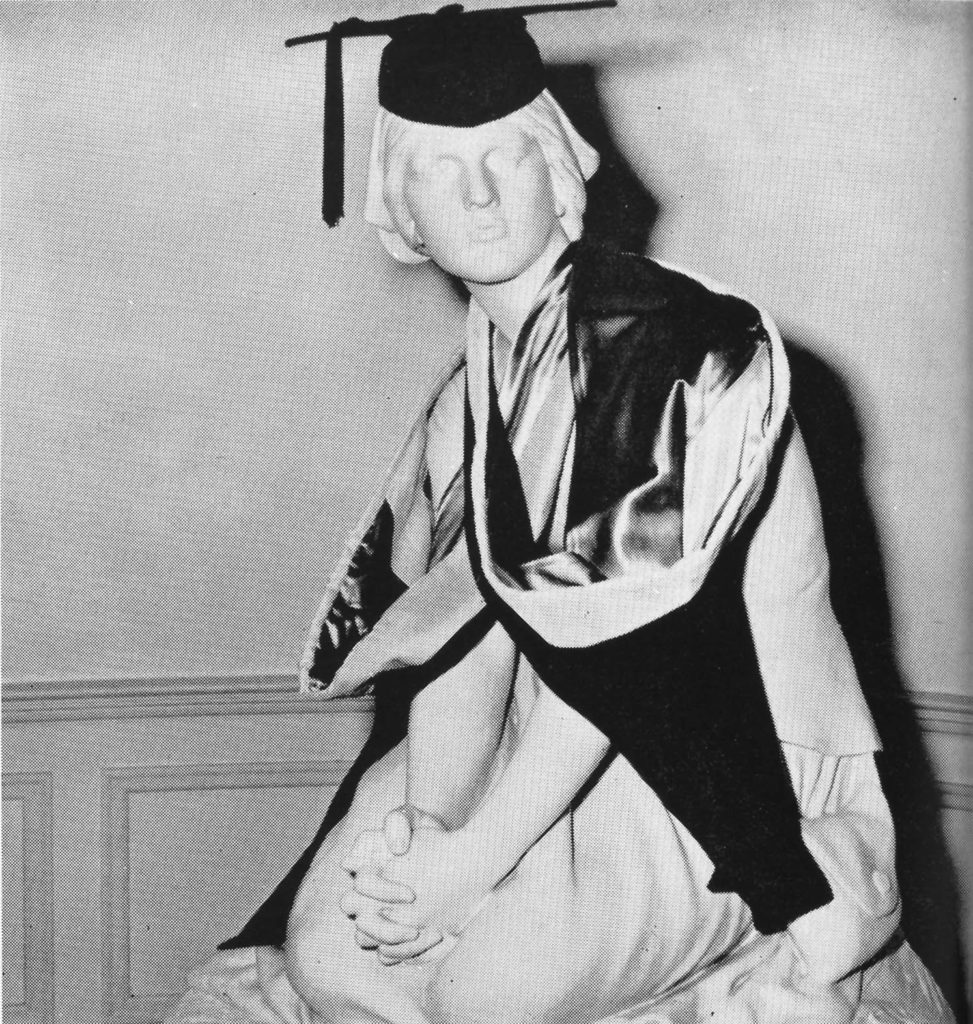
The statue of Joan of Arc was cast by Boston’s Caproni Brothers and she was copied from Henri Chapu’s 1872 marble Jeanne d’Arc à Domrémy, housed at the Musée D’Orsay in Paris.
By Lisa Chinn Marvashti ’92
Joan of Arc is back in Mary Ball Hall, as splendid as ever. Unveiled last fall, after a much-needed restoration befitting her place in Mary Washington history, the cast-plaster statue is poised to inspire a new generation of students.
“I know she’s just a statue, but having her back where she belonged really made me feel relieved,” said Kathryn Hall ’16, who spoke at last fall’s unveiling. “She’s just a part of what gives Ball its character and charm.”
Joan of Arc was barely more than a girl when, guided by voices from saints, she led French forces to victory in the Hundred Years’ War. Captured by the English and burned at the stake, she was posthumously pardoned and canonized, becoming a symbol of women’s purpose and strength.
“She reflects women’s ability to bring about change,” said Cedric Rucker ’81, associate vice president and dean of student life. “Think about the time of Mary Washington’s founding, when people didn’t really want women to have access to education.”
The ladies of Ball came forth in force, anyway, with Joan at their helm, seeing them off to exams and welcoming them home after long days in class. Sitting with rapt face, clasped hands, and bare feet, the statue carries a satchel along with a puzzling past.
At times, students weren’t sure who she was. Pocahontas, perhaps? The university’s namesake, Mary Ball Washington?
A 1992 story in the student newspaper, then called The Bullet, mentioned identical statues at Virginia’s James Madison, Radford, and Longwood universities, which also began as teachers’ colleges for women. Mary Washington’s statue arrived on campus in 1917.
Maker’s marks on three of the forms reveal they were cast by Boston’s Caproni Brothers. A response to the Bullet article from a Caproni descendant solved the mystery of the statue’s identity – she was copied from Henri Chapu’s 1872 marble Jeanne d’Arc à Domrémy, housed at the Musée D’Orsay in Paris.
When Ball Hall opened in all its grandeur in 1935, the statue took an honored place in the center of the atrium, beneath a circular skylight, ringed by a spiral staircase. Through the years, Joan held bouquets and Solo cups; she was decked out in sunglasses and scarves, commencement cloaks and Halloween costumes, mortarboards and makeup.

The statue was adorned for commencement in this photo from the 1959 “Battlefield” yearbook.
All that love took a toll. Cracked, chipped, and dented, she had lost some of her luster and almost her head. That’s when UMW painting supervisor Milton Kline, working to freshen Ball Hall, took note and called Tom Thomas of Fine Line Architectural Detailing.
“Restoration to me is like being a character actor,” said Thomas, who already had given JMU’s Joan new life. “You need to get to know the subject and really think about the end audience. I was picturing her back home in Ball.”
From photos Kline sent, Thomas surveyed the damage then hauled the statue to his Harrisonburg, Virginia, studio, where she stayed for a month. He shored up the head and stripped away layers of paint. Then he scrubbed, patched, and sanded. A time capsule placed inside the cast details the process.
Now back home and restored to her original splendor, Joan of Arc claims a new pedestal, circled by blue velvet benches. A woman determined to fight for her country, she represents “the skills, talent, prowess, and leadership abilities in our community,” Rucker said.
“She’s the perfect symbol for the University of Mary Washington.”
